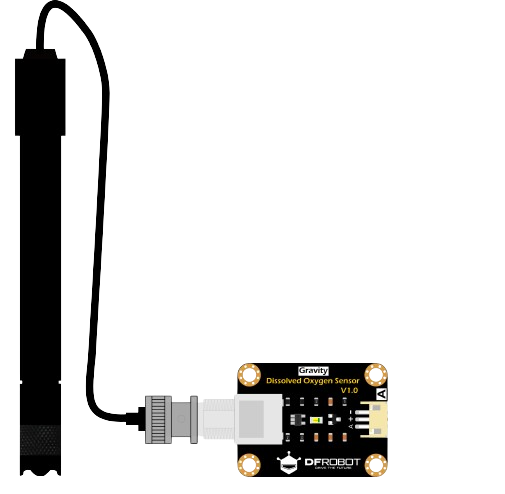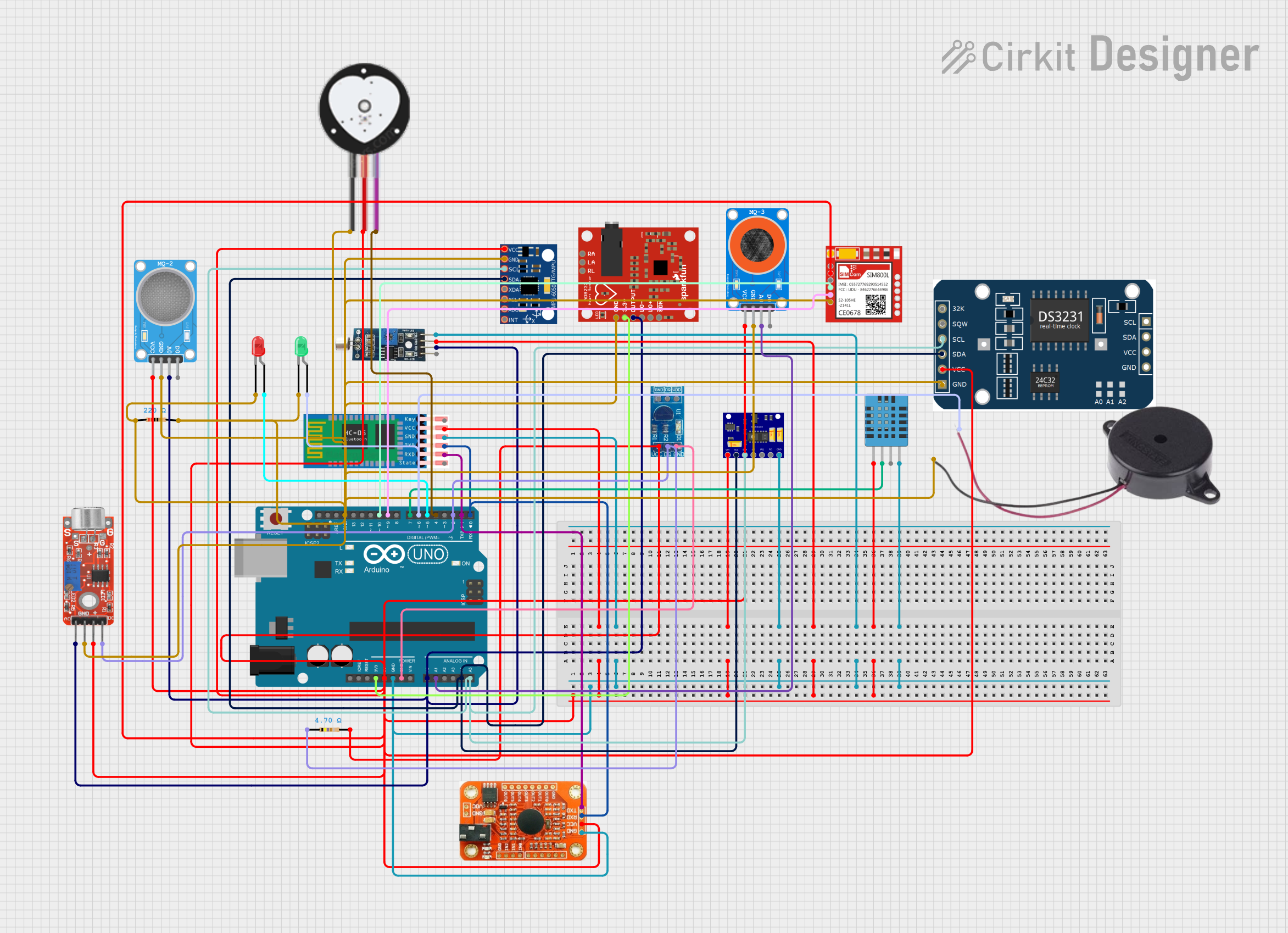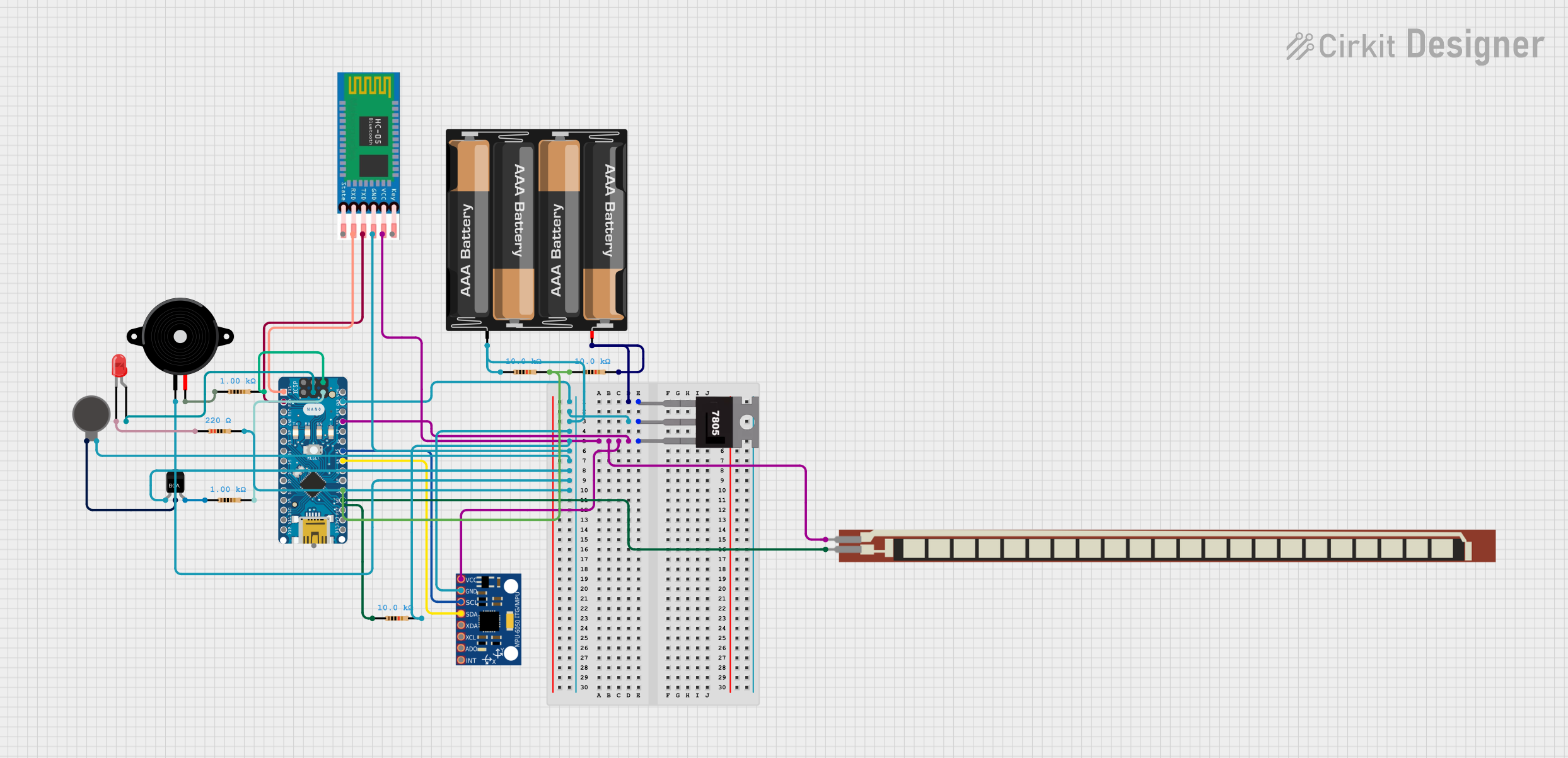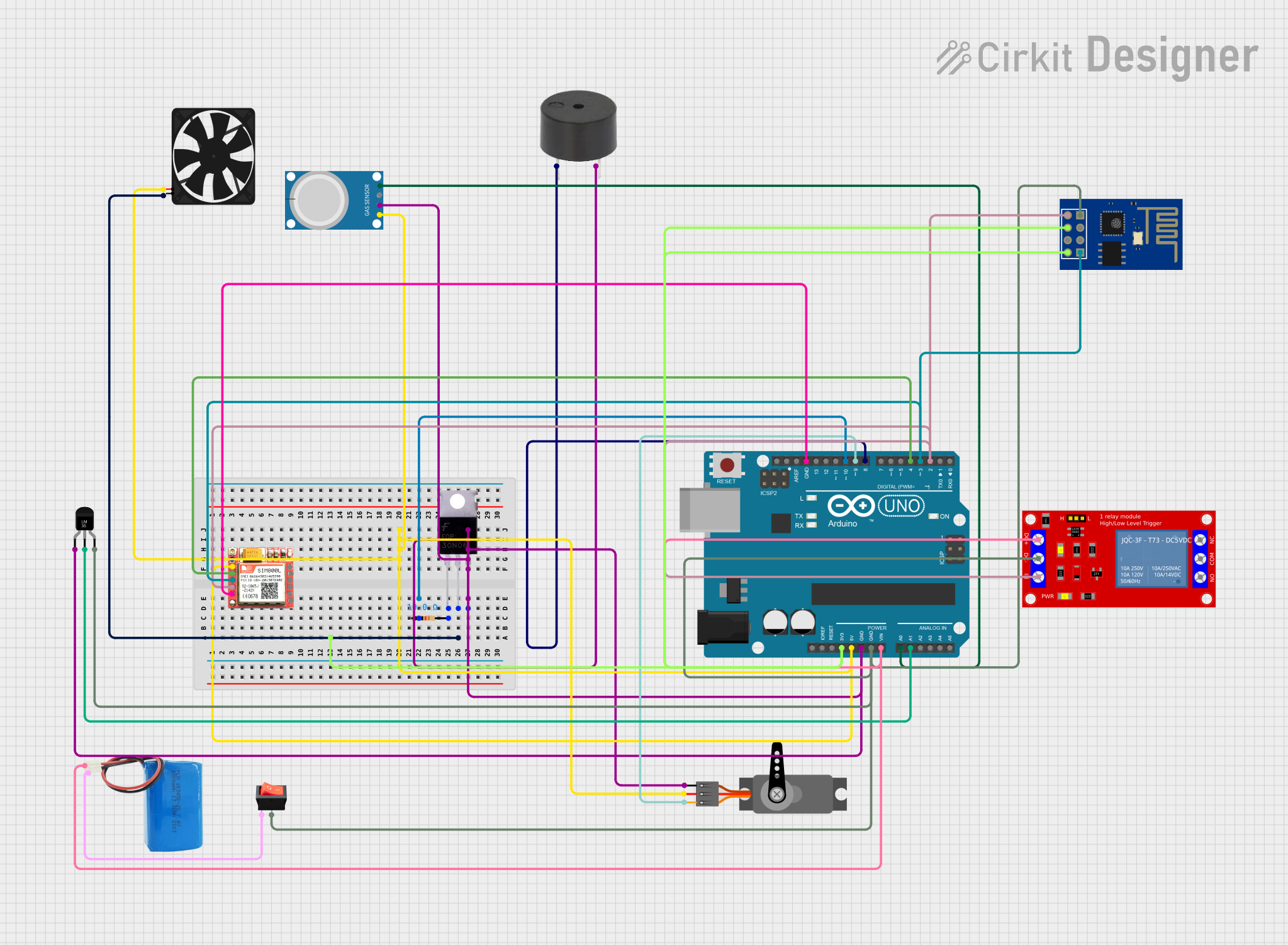
How to Use Do Sensor: Examples, Pinouts, and Specs

 Design with Do Sensor in Cirkit Designer
Design with Do Sensor in Cirkit DesignerIntroduction
The Do Sensor, or Dissolved Oxygen Sensor, is an electronic device designed to measure the concentration of oxygen dissolved in a liquid, primarily water. This sensor is crucial for assessing water quality in various environments such as rivers, lakes, and oceans. It is also extensively used in aquaculture to ensure the health and growth of aquatic life, in wastewater treatment plants to monitor and control the treatment process, and in research laboratories for environmental studies.
Common applications include:
- Environmental monitoring
- Aquaculture and fish farming
- Water treatment and quality control
- Scientific research
Explore Projects Built with Do Sensor

 Open Project in Cirkit Designer
Open Project in Cirkit Designer
 Open Project in Cirkit Designer
Open Project in Cirkit Designer
 Open Project in Cirkit Designer
Open Project in Cirkit Designer
 Open Project in Cirkit Designer
Open Project in Cirkit DesignerExplore Projects Built with Do Sensor

 Open Project in Cirkit Designer
Open Project in Cirkit Designer
 Open Project in Cirkit Designer
Open Project in Cirkit Designer
 Open Project in Cirkit Designer
Open Project in Cirkit Designer
 Open Project in Cirkit Designer
Open Project in Cirkit DesignerTechnical Specifications
Key Technical Details
| Specification | Value/Description |
|---|---|
| Measurement Range | 0-20 mg/L (ppm) dissolved oxygen |
| Accuracy | ±0.3 mg/L |
| Response Time | ≤90 seconds (90% response at 25°C) |
| Operating Voltage | 3.3V to 5V DC |
| Output Signal | Analog (0-3.0V) or Digital (UART, I2C, depending on model) |
| Operating Temperature | 0-50°C (32-122°F) |
| Calibration | Required at first use and periodically thereafter |
Pin Configuration and Descriptions
| Pin Number | Name | Description |
|---|---|---|
| 1 | VCC | Power supply (3.3V to 5V DC) |
| 2 | GND | Ground connection |
| 3 | DO | Analog dissolved oxygen output (0-3.0V) |
| 4 | TX | Transmit pin for digital communication (UART) |
| 5 | RX | Receive pin for digital communication (UART) |
| 6 | SCL | Serial Clock for I2C communication (if available) |
| 7 | SDA | Serial Data for I2C communication (if available) |
Usage Instructions
Integration with a Circuit
To use the Do Sensor in a circuit:
- Connect the VCC pin to a power supply between 3.3V and 5V DC.
- Connect the GND pin to the ground of the power supply.
- For analog output, connect the DO pin to an analog input on your microcontroller.
- For digital communication, connect the TX and RX pins to the corresponding RX and TX pins on your microcontroller. If using I2C, connect SCL and SDA to the respective pins on the microcontroller.
Best Practices
- Always calibrate the sensor before first use and periodically thereafter to ensure accurate readings.
- Avoid touching the sensor membrane as oils and contaminants can affect readings.
- Keep the sensor's membrane moist when not in use.
- Avoid exposing the sensor to extreme temperatures and direct sunlight.
Example Code for Arduino UNO
// Example code for interfacing Do Sensor with Arduino UNO
#include <SoftwareSerial.h>
SoftwareSerial mySerial(10, 11); // RX, TX
void setup() {
Serial.begin(9600);
mySerial.begin(9600); // Initialize software serial for Do Sensor
}
void loop() {
if (mySerial.available()) {
float dissolvedOxygen = readDOSensor();
Serial.print("Dissolved Oxygen (mg/L): ");
Serial.println(dissolvedOxygen);
}
delay(1000); // Wait for 1 second before reading again
}
float readDOSensor() {
// Read the analog value from sensor
int sensorValue = analogRead(A0);
// Convert the analog value to dissolved oxygen concentration
float voltage = sensorValue * (5.0 / 1023.0); // Convert to voltage
float dissolvedOxygen = voltage * (20.0 / 3.0); // Convert voltage to DO value
return dissolvedOxygen;
}
Troubleshooting and FAQs
Common Issues
- Inaccurate Readings: Ensure the sensor is calibrated correctly. Avoid contamination of the sensor membrane.
- No Readings: Check the power supply and connections. Ensure the sensor's membrane is not dry.
- Erratic Readings: Stabilize the sensor in the liquid for a few minutes before taking measurements. Avoid air bubbles on the sensor membrane.
FAQs
Q: How often should I calibrate the Do Sensor? A: Calibration should be done at first use and then every month or after significant changes in water quality.
Q: Can the Do Sensor be used in saltwater? A: Yes, but ensure the model you have is rated for saltwater use and take into account the salinity when interpreting readings.
Q: What is the lifespan of the Do Sensor? A: With proper care and maintenance, the sensor can last several years. The membrane may need to be replaced periodically.
Q: How do I clean the sensor? A: Rinse the sensor with distilled water and gently pat dry. Do not use chemicals or abrasive materials.
For further assistance, consult the manufacturer's manual or contact technical support.